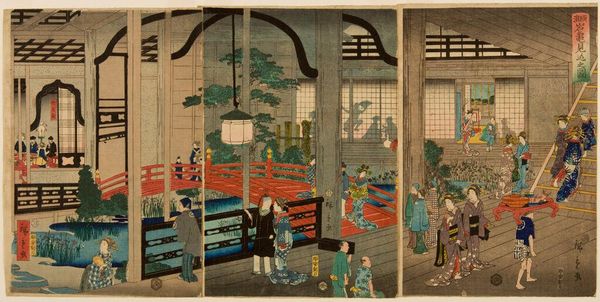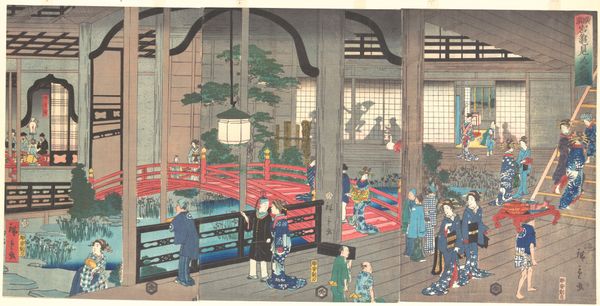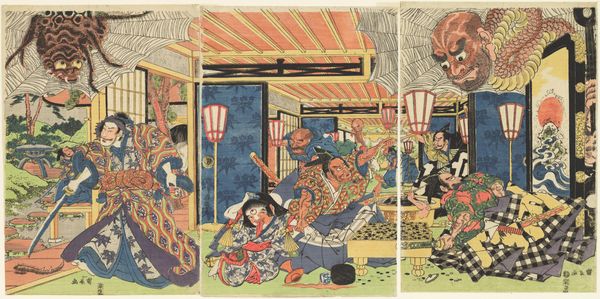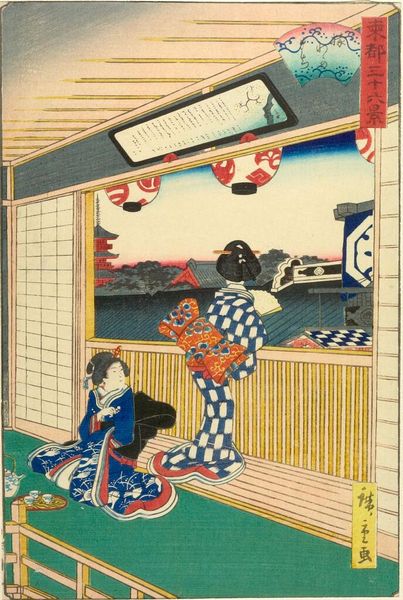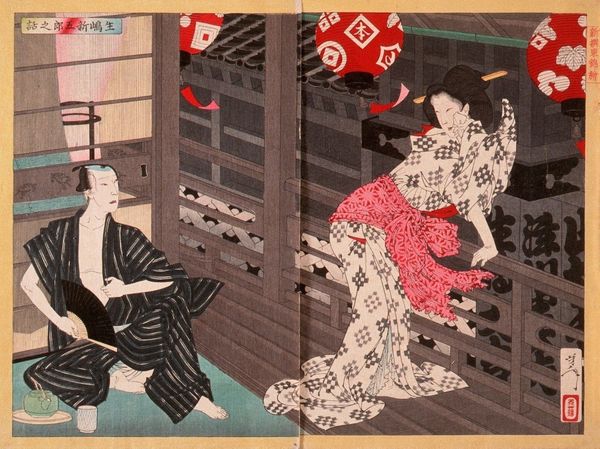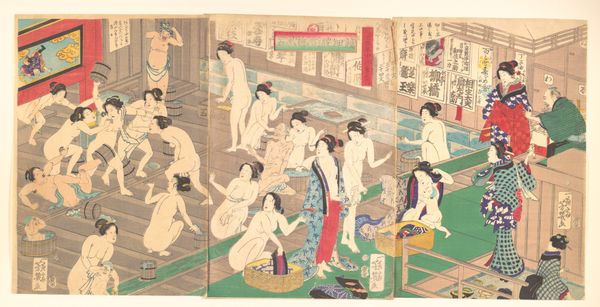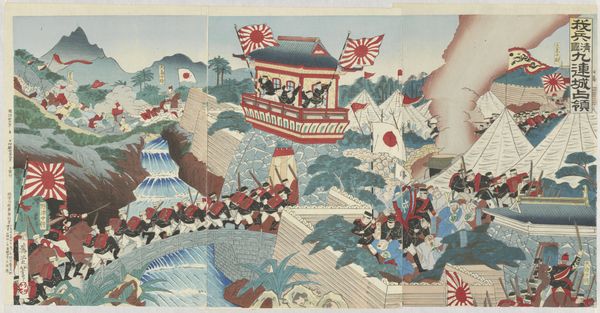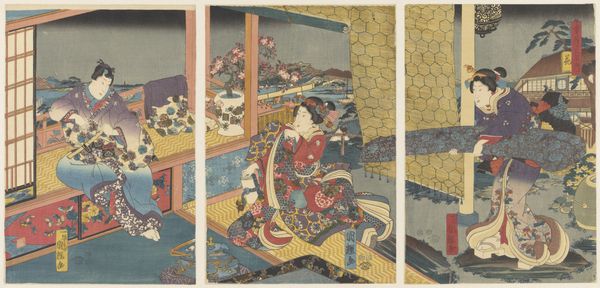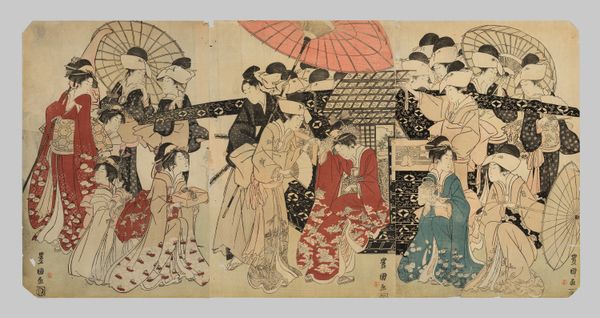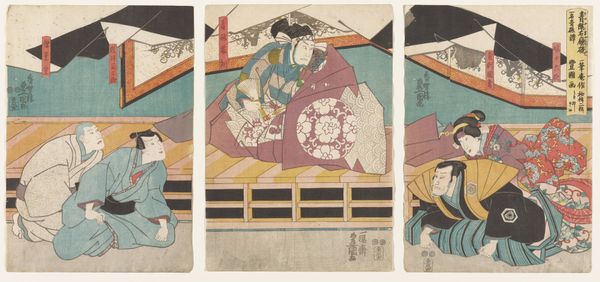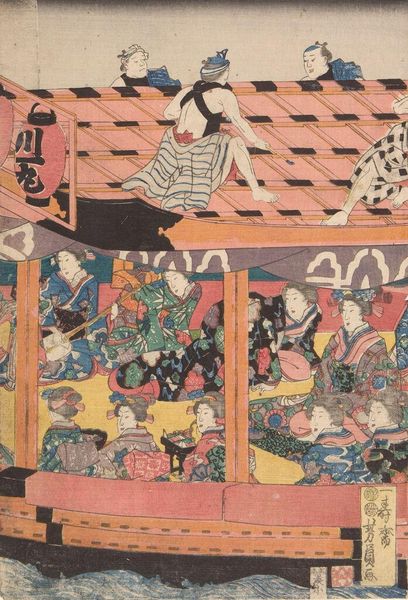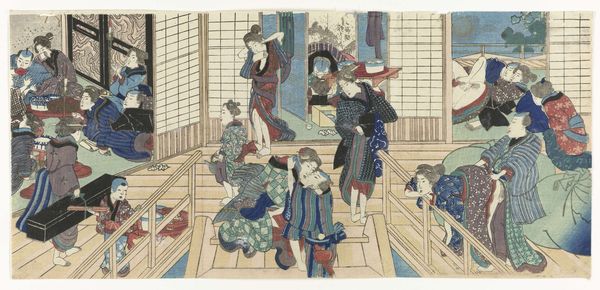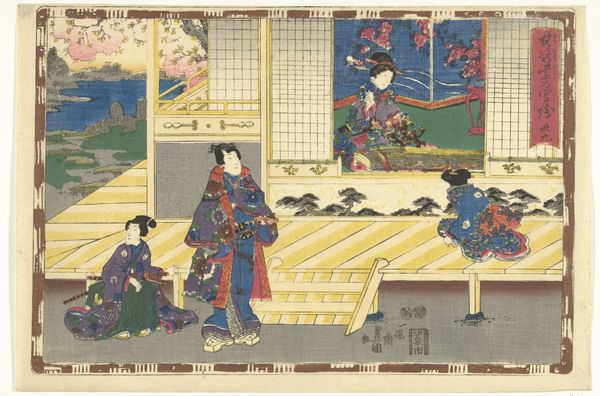
Copyright: Public domain
Curator: This is a woodblock print triptych by Yōshū Chikanobu, titled "November: performance at Saruwakacho," created in 1889. Editor: It's captivating. The colors are soft, almost dreamlike. I'm immediately drawn to the contrast between the lively crowd and the serene figures on the covered walkway. Curator: Chikanobu was working during a period of rapid modernization in Japan. Prints like these offer us a window into the cultural shifts and continuities of the Meiji era. Ukiyo-e traditions adapted to portray contemporary subjects and changing social norms. Editor: I see a real interplay of public and private spaces here. The women, elegantly dressed, are observing the performance. Their presence highlights issues of access and spectacle. Who had the privilege to observe, to be seen? And at what cost? Curator: Precisely. Consider the lanterns; they’re both decorative and functional, illuminating the performance. They signify festive gatherings which were highly regulated by local governing bodies. It's fascinating how the Saruwakacho district transformed over the course of the Edo and Meiji periods. The art of Kabuki performance was directly linked to cultural trends in Japanese history. Editor: I agree. Kabuki held complicated tensions given its links to pleasure quarters which existed alongside more acceptable forms of entertainment. The layers of symbolism and the social dynamics on display, coupled with the gorgeous Impressionist style influence, provide much food for thought about identity and spectatorship then, and even now. Curator: Yes. Understanding these nuances is so crucial when approaching visual art, even work from centuries prior. Editor: Looking at this, I am left thinking about what visual stories we create to narrate and perform the concept of ourselves, to ourselves and others.
Comments
No comments
Be the first to comment and join the conversation on the ultimate creative platform.
